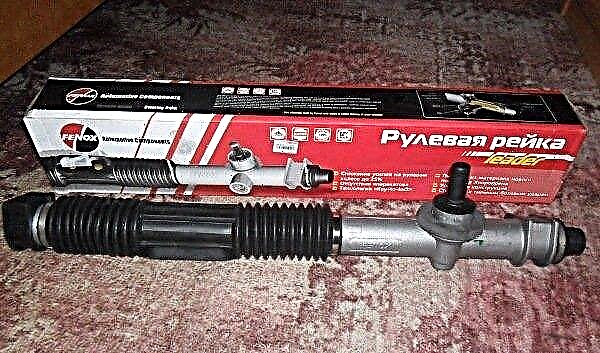
Tinting of car windows provides additional comfort, while protecting from the sun's rays, hiding the interior of the cabin from prying eyes, and also improving the appearance.
However, when drivers need to remove the film, not everyone knows how to do it on a budget, without consequences and marks on the glass.
The need to remove toning

Since 2016, the legislation regulating the level of dimming of windows has not changed significantly, and therefore fans of tinted glass have got used to and adapted to the restrictions. But sometimes you need to get rid of toning in the next row the most common reasons:
- Wear, which mainly depends on the quality of the film. It is expressed in the appearance of bubbles and scuffs on the surface, as well as in small fragments or whole pieces peeling off the glass.
- A glass defect that may be chipped or cracked or otherwise damaged. In this case, the glass will need to be replaced, and, therefore, the tint must be removed first.
- Inconsistency with GOST. This paragraph applies to those car owners whose front and side windows have a transparency less than the level of 70 - 75% established by law.
In order to avoid trouble with the traffic police inspectors, the driver may express a desire to remove the film on his own, without waiting for the corresponding prescription.
Finally, the driver may get tired of the tinting, want to change the shade level, or buy a tinted car from the aftermarket that they don't need.
Removal errors

Outwardly, it seems that you can get rid of the film without much effort and experience, especially if its edges themselves have begun to bend from time to time. Some drivers recklessly tug at the edge that has come off the surface, tearing off the film in whole or in pieces. But there is always a risk of damaging the glass with rash actions, and therefore the car owner should observe a number of mandatory rules:
- Do not use sharp objects such as knives, blades or scissors to remove tint, after which scratches will remain on the glass, and the film itself will be removed with uneven patches.
- Do not use strong professional chemicals or other chemicals such as acetone. Although such a tool is really capable of dissolving the tinting, but at the same time it will "eat up" the paintwork and ruin the rubber seals.
Tinting removal methods

The motorist can not waste time and go to a car service, where specialists will quickly clear the windows of tinting. On the other hand, you can save money by doing this really easy procedure yourself.
In addition to the necessary tools, it is recommended to choose the right weather, because the higher the degree outside, the easier it will be to separate the film. The heat makes the adhesive layer softer and more viscous, and therefore the driver does not need to make efforts to remove the tinting. But in the cold months it will be much more difficult to get rid of the film.
To remove the tint film, several methods are used, depending on the type of coating and its quality:
Heat
One of the most popular and effective methods, which consists precisely in heating the adhesive layer, so that it changes its properties, becomes viscous and is easier to separate from the glass. This method will require a regular household or industrial hair dryer, which will complete the task faster, but may melt the film too much and only adhere it to the glass more strongly.
The driver will need to methodically warm up the glass from each edge until the film begins to wrinkle and peel off. Then it is removed with a plastic or rubber spatula so as not to damage the glass.
It should only be remembered that car glass, with its impressive thickness, has a small level of strength, so you need to ensure that the heating temperature does not exceed +40 degrees.
It is better to do the work with a partner who will carefully remove the tint while the owner maintains a stable degree of heating. The only drawback of this method can be called traces of glue remaining on the glass surface.
If tinted recently, the glue will easily wash away the soapy water. If the film is used for a long time, a water or soap solution will be powerless, and you will have to use, for example, a universal solvent. It is able to quickly dissolve dried glue, but it is necessary to work with it very carefully so that the aggressive elements in its composition do not harm the glass surface.
Another handy tool for removing glue residues is gasoline, which is recommended to be pre-diluted with water. Alcohol or ammonia are also suitable for such work, although when using the latter, you will definitely need a respirator and gloves.
Detergents
If the motorist does not have a hair dryer or assistant for the previous method, you can use any dishwashing detergent diluted with water to reduce the concentration of chemicals.
For convenience, the resulting solution is poured into any spray bottle, the edges of the film are sprayed, bend them as they peel off and continue to systematically process the tint from the inside so that it can more easily move away from the glass.
Simultaneously with spraying the solution, the film is also pry off with a spatula or any other non-sharp instrument so as not to scratch the glass and not tear the coating.
Ammonia
American car service specialists actively use ammonia or ammonia to remove tinting, against which rare problems can resist. Film processing with these means is as follows:
- First, the glass surface is wiped with soapy water and only then ammonia is applied, which must be worked with using personal protective equipment.
- On top of the applied ammonia, it is necessary to lay a plastic wrap or ordinary household bags, which is necessary to contain ammonia vapors and more effectively from the impact.
- In the summer, it is recommended to leave the glass covered with ammonia in the sun to warm it up. Or to carry out work in a warm room, where the tinting began to peel off independently from the heat and ammonia vapors.
Removing the film from the rear window

When you need to get rid of the tinting on the rear window, you must remember that there are electric heating threads there that cannot be damaged. The need for this procedure does not arise often, because due to the rear-view mirrors, there are no strict requirements for the level of light transmission to the rear window.
If such a need exists, the motorist is advised to choose a hot air removal method in order to exert the least possible load on the heating elements, as well as on the glass itself.
Tinted glass care

To avoid the main reason for removing tinting - wear, Windows covered with foil must be properly cared for:
- After applying the film, you must not leave the car windows open for a long time (up to 5 days) so that the tinting does not go away.
- It is not recommended to wash the inner surface of the glass for about 3-4 weeks, so that water, soap or auto chemicals do not interfere with the adhesion of the film to the surface.
- For a similar period of time, you should not touch the edges of the film, allowing it to fix as firmly as possible on the windows.
- After washing the car, the windows must be wiped dry, not allowing moisture to penetrate under the tint;
- For washing, do not use brushes that could damage the integrity of the tinting.
A rare car owner thinks about the importance of proper care of tinted glass, which directly affects the life of this protective coating. Meanwhile, when the film becomes unusable, the owner will spend much more effort and money to remove or replace it.
Conclusion
The methods of getting rid of the tint film are varied, simple and not very different from removing the body PVC film. The main thing in this process is not to damage the glass, so that later you do not have to deal with their replacement.
Experts recommend already at the stage of purchasing a film for self-application or while receiving a service in a car service to clarify the manufacturer, density and quality of the coating, which will affect the wear resistance and difficulty of removal.

|| list |
- The need to remove toning
- Removal errors
- Tinting removal methods
- Heat
- Detergents
- Ammonia
- Removing the film from the rear window
- Tinted glass care
|| rss | Tinting of car windows provides additional comfort, while protecting from the sun's rays, hiding the interior of the cabin from prying eyes, and also improving the appearance.
However, when drivers need to remove the film, not everyone knows how to do it on a budget, without consequences and marks on the glass.
The need to remove toning
Since 2016, the legislation regulating the level of dimming of windows has not changed significantly, and therefore fans of tinted glass have got used to and adapted to the restrictions. But sometimes you need to get rid of tinting altogether for the following number of the most common reasons:
Wear, which mainly depends on the quality of the film. It is expressed in the appearance of bubbles and scuffs on the surface, as well as in small fragments or whole pieces peeling off the glass.
A glass defect that may be chipped or cracked or otherwise damaged. In this case, the glass will need to be replaced, and, therefore, the tint must be removed first.
Inconsistency with GOST. This paragraph applies to those car owners whose front and side windows have a transparency less than the level of 70 - 75% established by law.
In order to avoid trouble with the traffic police inspectors, the driver may express a desire to remove the film on his own, without waiting for the corresponding prescription.
Finally, the driver may get tired of the tinting, want to change the shade level, or buy a tinted car from the aftermarket that they don't need.
Removal errors
Outwardly, it seems that you can get rid of the film without much effort and experience, especially if its edges themselves have begun to bend from time to time. But there is always a risk of damaging the glass with non-fraudulent actions, and therefore the car owner should follow a number of mandatory rules:
• Do not use sharp objects such as knives, blades or scissors to remove tint, after which scratches will remain on the glass and the film itself will be removed with uneven patches.
• Do not use strong professional chemicals or other chemicals such as acetone. Although such a tool is really capable of dissolving the tinting, but at the same time it will "eat up" the paintwork and ruin the rubber seals.
Tinting removal methods
The motorist can not waste time and go to a car service, where specialists will quickly clear the windows of tinting. On the other hand, you can save money by doing this really easy procedure yourself.
In addition to the necessary tools, it is recommended to choose the right weather, because the higher the degree outside, the easier it will be to separate the film. But in the cold months it will be much more difficult to get rid of the film.
To remove the tint film, several methods are used, depending on the type of coating and its quality:
Heat
One of the most popular and effective methods, which consists precisely in heating the adhesive layer, so that it changes its properties, becomes viscous and is easier to separate from the glass. This method will require a regular household or industrial hair dryer, which will complete the task faster, but may melt the film too much and only adhere it to the glass more strongly.
The driver will need to methodically warm up the glass from each edge until the film begins to wrinkle and peel off. Then it is removed with a plastic or rubber spatula so as not to damage the glass.
It should only be remembered that car glass, with its impressive thickness, has a small level of strength, so you need to ensure that the heating temperature does not exceed +40 degrees.
It is better to do the work with a partner who will carefully remove the tint while the owner maintains a stable degree of heating. The only drawback of this method can be called traces of glue remaining on the glass surface.
If tinted recently, the glue will easily wash away the soapy water. It is able to quickly dissolve dried glue, but it is necessary to work with it very carefully so that the aggressive elements in its composition do not harm the glass surface.
Another handy tool for removing glue residues is gasoline, which is recommended to be pre-diluted with water. Alcohol or ammonia are also suitable for such work, although when using the latter, you will definitely need a respirator and gloves.
Detergents
If the motorist does not have a hair dryer or assistant for the previous method, you can use any dishwashing detergent diluted with water to reduce the concentration of chemicals.
For convenience, the resulting solution is poured into any spray bottle, the edges of the film are sprayed, bend them as they peel off and continue to systematically process the tint from the inside so that it can more easily move away from the glass.
Simultaneously with spraying the solution, the film is also pry off with a spatula or any other non-sharp instrument so as not to scratch the glass and not tear the coating.
Ammonia
American car service specialists actively use ammonia or ammonia to remove tinting, against which rare problems can resist. Film processing with these means is as follows:
• First, the glass surface is wiped with soapy water and only then ammonia is applied, which must be handled using personal protective equipment.
• On top of the applied ammonia, it is necessary to lay plastic wrap or ordinary household bags, which is necessary to contain ammonia vapors and more effectively from the impact.
• In summer, it is recommended to leave the glass covered with ammonia in the sun to warm it up. Or to carry out work in a warm room, where the tinting began to peel off independently from the heat and ammonia vapors.
Removing the film from the rear window
When you need to get rid of the tinting on the rear window, you must remember that there are electric heating threads there that cannot be damaged. The need for this procedure does not arise often, because due to the rear-view mirrors, there are no strict requirements for the level of light transmission to the rear window.
If such a need exists, the motorist is advised to choose a hot air removal method in order to exert the least possible load on the heating elements, as well as on the glass itself.
Tinted glass care
To avoid the main reason for removing tinting - wear, the windows covered with film must be properly looked after:
• After applying the film, you must not leave the car windows open for a long time (up to 5 days) so that the tinting does not come off.
• It is not recommended to wash the inner surface of the glass for about 3-4 weeks, so that water, soap or auto chemicals do not interfere with the adhesion of the film to the surface.
• For the same period of time, do not touch the edges of the film, allowing it to adhere to the windows as firmly as possible.
• After washing the car, wipe the windows dry, not allowing moisture to penetrate under the tint;
• For washing, do not use brushes that could damage the integrity of the tinting.
A rare car owner thinks about the importance of proper care of tinted glass, which directly affects the life of this protective coating. Meanwhile, when the film becomes unusable, the owner will spend much more effort and money to remove or replace it.
Conclusion
The methods of getting rid of the tint film are varied, simple and not very different from removing the body PVC film. The main thing in this process is not to damage the glass, so that later you do not have to deal with their replacement.
Experts recommend already at the stage of purchasing a film for self-application or while receiving a service in a car service to clarify the manufacturer, density and quality of the coating, which will affect the wear resistance and difficulty of removal.











